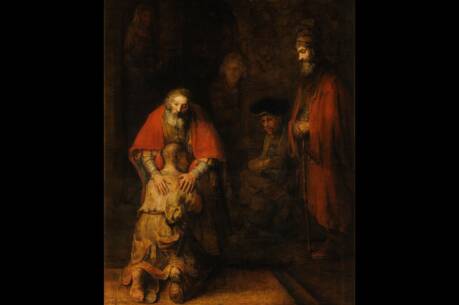The Lamb of God
As we return to Ordinary Time, the readings bring us back into reflection on the beginnings of our journey of discipleship. The liturgical cycle is not a circle that keeps us going around and around, repeatedly going over the same ground. Rather, each year, we approach the texts with freshness because our world is not the same as in the previous year and we ourselves have changed. Much as a couple, when celebrating their anniversary, retell the story of how they first met and fell in love, so the Gospel invites us to reflect on the beginnings of how we came to know Jesus.
John the Baptist, who plays the role of best man (3:29-30), sets the stage for the first disciples to recognize and follow Jesus. His proclamation of Jesus as Lamb of God has caused much debate among scholars. For some, this title evokes the servant in Isaiah, spoken of in today’s first reading. In subsequent chapters, there is emphasis on the suffering of the servant, who is oppressed and afflicted, “yet he did not open his mouth, like a lamb led to the slaughter” (Is 53:7). Others think of the lambs sacrificed in the temple as sin offerings (Lv 4:32-35). Still others think of the Passover lamb, whose blood was smeared on the doorposts of the Israelites the night before beginning their Exodus from Egypt (Ex 12:1-13).
One difficulty with the first interpretation is that it fits better the Synoptic Gospels than the Gospel of John. In the synoptic tradition, Jesus does not answer back throughout his trial and stands before his accusers in silence. In the fourth Gospel, however, Jesus is depicted as fully aware and even in control of the events in the passion narrative. He does not remain silent but answers back in a confrontational manner when he is struck (18:23). In the Book of Revelation, the victorious Lamb completes the picture begun in the Gospel of John.
Neither is the symbol of a sacrificial lamb the best fit for the Gospel of John. Jesus stops the sacrificial process in the temple, driving out the sheep and the cattle (2:13-22). Moreover, in this Gospel he speaks of himself not as an unwitting victim but as the gate for the sheep and as the shepherd who willingly lays down his life for his sheep (10:7-18).
Most likely it is the symbolism of the Passover lamb that the Evangelist intends. Just as in the Exodus, the lamb’s blood protects the people as they begin their arduous journey toward new life. At the death of Jesus, the Evangelist brings this symbolism to the fore again, by interpreting the decision not to break Jesus’ legs, as they did to the other two crucified with him, as a fulfillment of the Scriptures that refer to the Passover lamb: “None of his bones shall be broken” (Jn 19:36; Ex 12:46). As the new Passover lamb, Jesus protects his disciples (17:11-15) and opens the way for the new liberation of his people.
It is not as an expiatory sacrificial lamb that Jesus takes away the sin of the world, but as one who embodies a way of life that frees people from all sinfulness that holds them bound. He shares with his disciples the power to live this manner of life when he appears to them after the Resurrection, breathing the Spirit upon them and commissioning them: “If you forgive the sins of any, they are forgiven them” (20:23). Just as John predicts in today’s Gospel, Jesus bathes his followers with the Holy Spirit, enabling us to live as he did, forgiving everyone we can. Living in this way extends John’s testimony to the Lamb of God in our day, and continues Christ’s action of taking away the sin of the whole world.
This article also appeared in print, under the headline “The Lamb of God,” in the January 3, 2011, issue.







